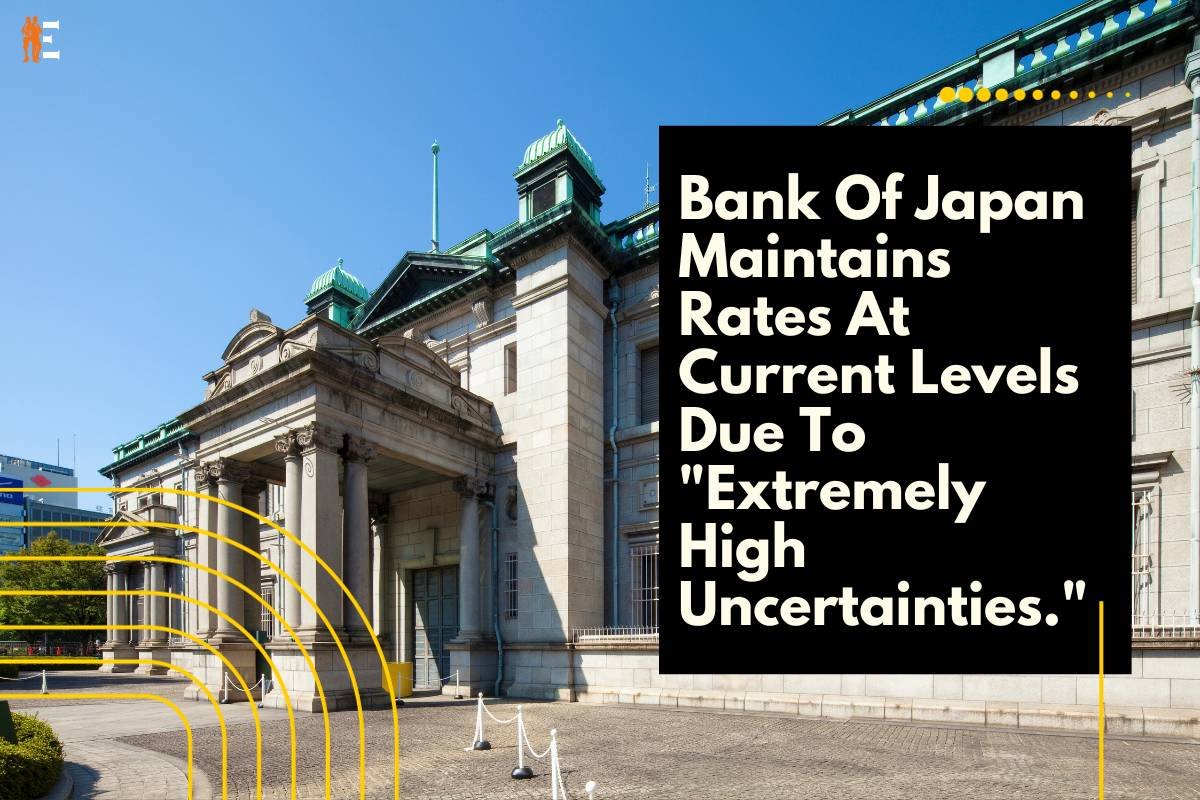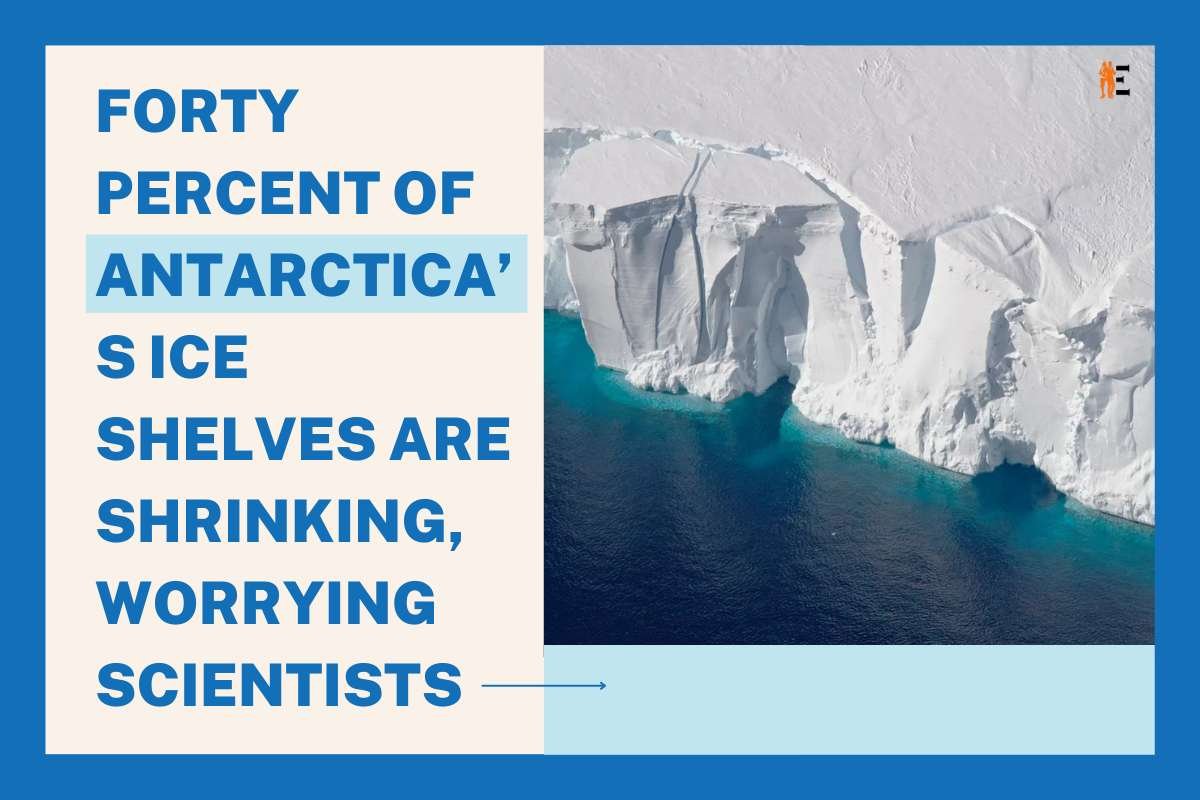Given the “extremely high uncertainties” surrounding the prospects for both domestic and international development, the Bank of Japan kept its ultra-loose monetary policy and left interest rates unchanged on Friday.
The Bank of Japan announced in a policy statement following its meeting in September that it would keep short-term interest rates at -0.1% and, as was generally anticipated, cap the yield on 10-year Japanese government bonds at zero.
“With extremely high uncertainties surrounding economies and financial markets at home and abroad, the Bank will patiently continue with monetary easing, while nimbly responding to developments in economic activity and prices as well as financial conditions,” the Bank of Japan stated in its statement on monetary policy on Friday.
However, Japan stands apart among other major central banks, which have hiked interest rates in the last two years to control spiralling inflation, due to the ultra-loose monetary policy of the Japanese central bank.
The Japanese yen dropped by 0.5% to roughly 148.3 against the dollar after Friday’s announcement, while 10-year Japanese government bond yields remained relatively steady, in part due to this policy divergence between the BOJ and the rest of the world. By already this year, the yen has lost more than 11% of its value against the US dollar.
“Comments from the Bank Of Japan Governor seems to reveal a continued lean into the dovish camp, at least for now, which led recent hawkish bets to question if they have gotten ahead of themselves,” said Yeap Junrong, a market strategist with IG Asia in Singapore.
“Some uncertainty over the economic outlook and still wanting to see more on the’sustainable 2% inflation’ condition for a policy pivot still seem to suggest little urgency from the central bank in terms of a quicker step towards policy normalisation,” the author continued.
The Bank Of Japan’s choice of course A week that ended on Friday saw a rush of other central bank policy announcements, including the U.S. Federal Reserve’s promise to maintain high rates for longer and the Bank of England’s decision to halt its streak of 14 consecutive interest rate increases.
As Governor Kazuo Ueda’s first policy adjustment since taking office in April, the Bank Of Japan relaxed its control over the yield curve at its most recent policy meeting in July to allow longer-term rates to move more in step with rising inflation.
“Inflation hasn’t overshot sharply since we published the July forecast report. However, it isn’t slowing as much as we had anticipated, according to Ueda, who spoke at a news conference on Friday.
“We will think about ending YCC or revising negative interest rates when we can foresee inflation hitting 2% steadily and sustainably,” he continued.
A policy tool called the yield curve control, or YCC, allows the central bank to set an interest rate objective and then buy and sell bonds as needed to accomplish it.
Superior anticipations
The decision to increase the allowed range for 10-year JGB yields from its 0% objective to 1% was considered as the beginning of a gradual shift away from the yield curve control policy implemented by Ueda’s predecessor.
After Ueda stated to Yomiuri Shimbun in an interview published on September 9 that the Bank Of Japan could have enough data by the end of this year to determine when it could end negative rates, many economists revised their predictions for a quicker exit from the BOJ’s ultra-loose monetary policy to sometime in the first half of 2024.
Nothing indicated that the timeline for achieving our price target had altered. I believed that entirely excluding the option would constrain the conversation at next policy-setting sessions, Ueda said on Friday.
There has recently been discussion of the Bank Of Japan being forced into action by the yen’s decline.
Before the rate announcement on Thursday, Bob Michele, global head of fixed income at JP Morgan Asset Management, told CNBC, “I think where their hand could be forced is looking at dollar-yen.”
“We’re awfully close to 150… when that starts to get to 150 and higher, then they have to step back and think: the selloff in the yen is now starting to import probably more inflation than we want,” the speaker continued.
Bank Of Japan Surprised Markets, Slowed Yen Depreciation: Briscoe
Enduring inflation
Core inflation has been higher than the Bank of Japan’s stated 2% objective for 17 straight months, but Bank Of Japan officials have been hesitant to end the dramatic stimulus that was implemented to combat decades of deflation in the third-largest economy in the world.
This is because there hasn’t been enough sustained inflation, according to the BOJ, which it attributes to meaningful wage rise that would, in turn, drive household spending and economic growth.
Strong demand must underpin inflation for Japan to consistently and sustainably reach 2%. A cycle of rising wages and inflation needs to be verified. We still need time for this. According to Ueda, trend inflation is still little below 2%.
He continued, “We’re seeing rising inflation expectations, or a shift in corporate behaviour. “In the past, price increases were challenging for businesses. But as more businesses started boosting prices, the cautious ones started to follow suit. At each policy meeting, we closely monitor changes, but I believe the top (of price increases) is drawing near.
Prior to the Bank Of Japan’s policy announcement on Friday, core inflation, which includes oil products but excludes volatile fresh food prices, came in at 3.1% year over year in August. Consumer prices rose 4.3% over the previous year, excluding energy and fresh food.
The Bank of Japan has several variables, including wage growth, the output gap, which gauges the difference between an economy’s actual and prospective output, and price expectations.
Wage Increase
Oliver Lee, client portfolio manager at Eastspring Investments, stated that Japan has the best chance in a generation to go from a deflationary climate to one that is slightly more inflationary and has some degree of durability.
“Wages are crucial. Japan needs to have significant and ongoing wage inflation because it may have a psychological effect on spending, he added. “It’s too soon to tell whether this will turn out to be the beginning of a positive cycle for economic growth, but hopefully it will be. To determine where we stand on that front, we probably need another six to twelve months.
Major Japanese businesses negotiate pay increases with unions every March in a procedure known as “shunto.” After the major labour unions and companies reached an agreement on a 3.8% wage increase this year, the most since 1993, much will depend on negotiations in 2024.
“Big firms’ results will start to arrive around January through March, then other firms. We’ll need to consider the variables that influence the pay talks, according to Ueda.
Prematurely increasing interest rates could stymie economic growth, but protracted policy tightening would put additional pressure on the Japanese yen and increase the likelihood of financial instability.
Any delay would increase the pressure on the Japanese prime minister, Fumio Kishida, who last week during a cabinet reshuffle promised to assist consumers in coping with growing living expenses. In addition, he promised to make sure that the third-largest economy in the world continually has wage growth that is higher than the rate of inflation.
Due to low capital spending, Japan’s gross domestic product growth for the April–June quarter was revised down from the initial 6% print to an annualised 4.8%.
Although the production gap increased by 0.4% in the second quarter, the first increase in 15 quarters, inconsistent domestic economic statistics and a hazy picture for the global economy have complicated the situation for policymakers.











